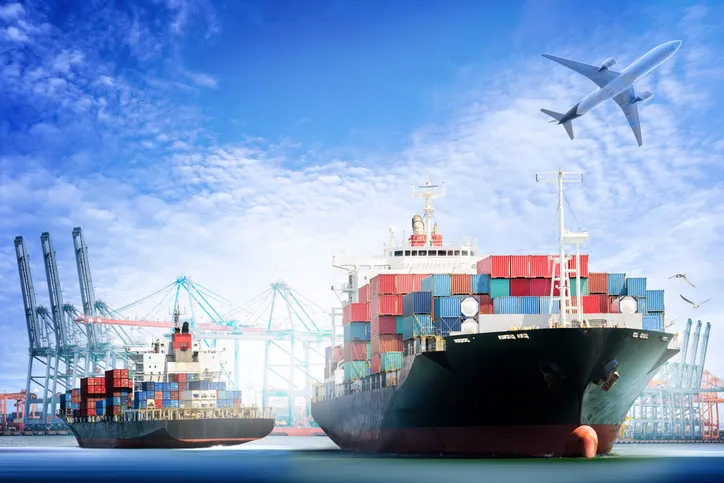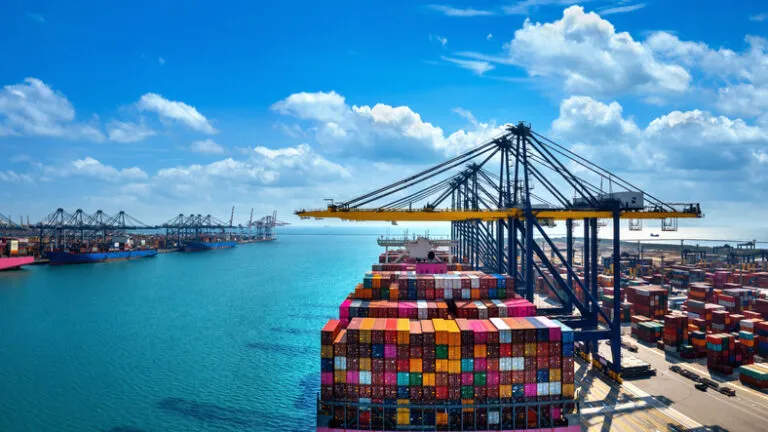To import is to bring one product or service from one country to another. The word import derives from the word port since the goods are frequently transported by vessels to other foreign countries. Together with exports, imports are the backbone of foreign trade. If a country’s value of imports is higher than the exports, the balance trade is negative.
A country is more likely to import goods when the internal factories do not produce them effectively and/or the cost is not attractive. Some countries might import raw materials or goods that are not available within their borders. As an example, many countries import petroleum because they do not have internal production or because they do not meet the demand. Free trade agreements and harmonized tariff schedules frequently determine which goods have a more attractive cost to import.
Import Steps
In legal aspects, a product can only be considered imported after its internalization in a country. That is possible due to the Customs Clearance and after all the taxes are paid. Importing can be split into 3 steps: administrative, fiscal and exchange.
The administrative step refers to governmental procedures and demands before the importing is concluded. They might vary according to the type of operation and product. These procedures also cover the licensing of the imports.
The fiscal step comprises the customs procedures for the importing clearance. In this step, the accuracy of the information declared by the trader is thoroughly analyzed and this service ranges from the imported goods to the documents presented and specific legislation. This analysis starts right after the products enter into the final destination. All the importing taxes must be dully paid and as soon as the customs clearance is finished, the product is considered imported and will be available for the internal market.
As for the currency, this step is regarding the purchase of foreign currency to pay for the importing taxes that are processed by the Central Bank of Brazil.
Portfolio Expansion
Importing is an excellent choice for companies that intend to expand the offer of products for the customers. However, the process of importing might bring many uncertainties and in case this activity is not accurately performed, this strategy shall not achieve the expected outcome. That is why it is pivotal to strictly follow all the steps and to have a feasibility analysis from the very beginning.

First of all, the managers must know which products shall be imported and which administrative decisions must be made for each operation. Some goods are subject to importing licensing. All these rules must be verified in Siscomex (the Brazilian Foreign Trade System). In this system the government can control the Brazilian Foreign Trade.
Moreover, in your office, both marketing and sales team must carry out a thorough analysis in order to define which products are more attractive for their customers and therefore they can be a game changer for your business.
How to select suppliers
One of the main points to make your international deals to become successful is to count on renowned suppliers who offer excellent products at competitive prices and fully understand all the steps in the importing trade. The prospection of customers is as important as the methods of payments, prices and time to pay. Just like any business deal.
Remember to request product samples before closing any deal. If production is the focus of your company, and you do not know how to prospect customers, search for partners in this field. By doing so, your company can focus on the core business and the prospection will be performed by experts.
Importing License
Your company shall obtain the license importing for the products. In order to import the products, the license is fundamental, and it is subject to authorization granted by governmental bodies. After it is applied in SISCOMEX, the request is analyzed in order to grant the license.
To verify whether the product needs to be licensed, the trader shall check the Simulator for Importing Administrative Treatment. In case it is no longer necessary, the traders must directly provide the registration in the Declaration of Importing (DI).
Contract a Cargo Agent
The risks present in the process of importing are one of the main obstacles for managers and traders. Therefore, your company shall have an international shipping insurance that is a protective measure. Do not forget to contract the freight in case this service is not included in the deals you have with your suppliers. As soon as the product is in Brazil, customs clearance is the next step to release the product in the FRB (Federal Revenue Service). That is where all the analysis for documents and taxes is performed together with the characteristics of the product.
Importing is a long process, and it takes both planning and management efforts to achieve. Therefore, contracting a Cargo Agent might be interesting and lucrative. Companies that are specialized in such service are able to offer complete expertise in importing and exporting. Such services cover many items such as customs, accounting, legal and tax. Last but not least, an experienced Cargo Agent might prevent future problems.
Importing without foreign exchange insurance
In this type of operation there is no payment to be made in another country. Another option is to pay in Brazilian currency. Therefore, the trader does not have to buy foreign currency. In case payments must be made overseas, the method of payment is a transfer wire.
There are special events such as products being transferred from one warehouse to the other (Interior Customs Stations). These transactions are considered importing without foreign exchange insurance and after the goods are nationalized, the exchange coverage is valid.
Importing with Foreign Exchange Coverage
In such operations, some amount of money is sent to another country as a method of payment to purchase a product. The current legislation establishes that transactions can be paid cash or in installments. For operations where the payment will be totally made in 360 days, the registration shall be entered into the Declaration of Importing.
When the payment of imports is made in installments, the interest rates paid shall be agreed on both parties in the same currency defined for the financing with official documents with the same amount paid. All the receipts for tax payments, and that includes IRS, shall be registered.
When the payment of imports exceeds 360 days it is mandatory to obtain the ROF (Registration of Financial Operations) in the Central Bank before the Declaration of Importing is issued as well as the payment of interest. In the SISCOMEX, the importer shall send the declaration to the Central Bank System of Information (Sisbacen). That is where the parties shall find the information regarding the financing and payment of the goods plus interest. In this system, the creditor data as well as the official documents for the operation with all the conditions must be included.

With these procedures, the conditions automatically shall be either approved or sent to analysis to the Central Bank Regional Offices. The operations with the public sector are analyzed by the Department of Foreign Capitals (Firce). In case the Central Bank takes longer than 05 (five) days to approve, the transaction is automatically approved. The Registration of Financial Operations (ROF) is valid through 180 days so that the imported goods are loaded in their final destination.
To transfer money overseas, the importer shall register the method of payment in the ROF after the Customs Clearance is performed.
Payment made before the goods are shipped
The importer transfers the total cost of the importing before the goods are shipped. It is a risky operation. The payment shall be made up to 180 days before the scheduled date of the loading or before the nationalization of the product is performed.
For the exchange settlement, the trader shall inform the bank the Pro Forma Invoice, commercial contract including the amounts of the transaction, the conditions both parties agree regarding the date and the limit date to deliver the cargo. In case the product is subject to Importing Licensing before the loading, the number of the product shall be informed. When the Declaration of Importing is registered, the conditions and time of the payment shall be informed as well.
As of the date of the loading or natinalization, the importer has 60 (sixty) days to complete the customs clearance and to include the contract of foreign exchange in the Declaration of Importing.
Importing Issues in Brazil
The complexity of this process is one of the most frequent complaints and, very often, this might be a big obstacle and bring intense confusion for traders.
The main issues are:
– Bureaucracy is an obstacle to fully understand the procedures to effectively conclude the process.
– High taxes might block the expansion of the segment and also compromise the financial health of the importing traders.
– The foreign exchange rates do not favor importing activities in Brazil.
– Port infrastructure makes the process slow, costly and uncertain.
–Lack of qualified labor is one of the bottlenecks in terms of productivity and business deals.
Brazil in the Import Market
Brazil imported US$ 150.7 billion dollars in international products in 2017, this represents a decrease by 37.1 percent since 2013. However, it is an increase by 9.6% when compared to 2016. Brazilian imports represent 0.9% of the global imports totaling US$ 16.054 trillion dollars.
In a continental perspective, 35.9% of all Brazilian imports in 2017 were purchased from Asian countries. European partners represent 25.1% of import sales to Brazil whereas 20.6% represent the North American products.
The lowest numbers come from Latin America and the Caribbean except for Mexico (14%) and Africa represents only 3.7%. Taking the Brazilian population into account, 207.4 million inhabitants, the total amount of US$ 150.7 billion in 2017 represents roughly US$730 of annual demand per product for each resident.
Talk to an expert:


